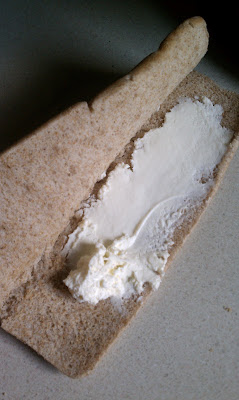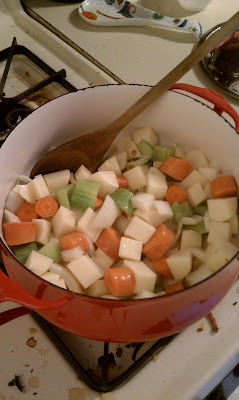




... My haphazard and anecdote-filled quest to juggle life, friends, love and work.... not necessarily all in that order...

Rich Homemade Ricotta
via Smitten Kitchen, via Tasting Table
I made this ricotta three different ways: with all milk, as the Salvatore recipe suggested (we found it a bit dry), with 3 cups milk and 1 cup heavy cream and with 3 1/2 cups milk and 1/2 cup heavy cream. Guess what? The last two ricottas were virtually indistinguishable.The extra cream did indeed add an even richer edge, but the one with less cream was also very indulgent. I imagine I’d use the richer version for toasts, for putting out at a party and the almost-as-rich one for pastas and things where I might need a larger, sturdier quantity. I’ll leave it up to you which way you go.
Makes about 1 generous cup of ricotta
3 cups whole milk
1 cup heavy cream (see Note above about using less)
1/2 teaspoon coarse sea salt
3 tablespoons freshly squeezed lemon juice
Pour the milk, cream and salt into a 3-quart nonreactive saucepan. Attach a candy or deep-fry thermometer. Heat the milk to 190°F, stirring it occasionally to keep it from scorching on the bottom. Turn off the heat and add the lemon juice, then stir it once or twice, gently and slowly. Let the pot sit undisturbed for 5 minutes.
Line a colander with a few layers of cheesecloth and place it over a large bowl (to catch the whey). Pour the curds and whey into the colander and let the curds strain for at least an hour. At an hour, you’ll have a tender, spreadable ricotta. At two hours, it will be spreadable but a bit firmer, almost like cream cheese. (It will firm as it cools, so do not judge its final texture by what you have in your cheesecloth.) Discard the whey, or, if you’re one of those crafty people who use it for other things, of course, save it. Eat the ricotta right away or transfer it to an airtight container and refrigerate until ready to use.




Maria Bosch Working from Toast Travels on Vimeo.
Watching this reminded me of my high school days in art class, trying out throwing pots and getting told off for always making 'abstract' pots. I couldn't help it, once I made something nice I would get an overwhelming desire to stick my finger into it as it whirled round, just to see what would happen.



Lemon Cake
From Smitten Kitchen
Yield: 2 loaf cakes (or one bundt)
2 sticks unsalted butter, at room temperature
2 1/2 cups sugar
4 extra-large eggs, at room temperature
1/3 cup grated lemon zest (6 to 8 large lemons)
3 cups all-purpose flour
1/2 teaspoon baking powder
1/2 teaspoon baking soda
1 teaspoon kosher salt
3/4 cup plus 3 1/2 tablespoons freshly squeezed lemon juice
3/4 cup buttermilk, at room temperature
1 teaspoon vanilla extract
2 cups confectioners’ sugar, sifted.
1. Heat oven to 350 degrees F. Grease and flour two 8 1/2-by-4 1/4-by-2 1/2-inch loaf pans, and line the bottoms with parchment paper.
2. Cream butter and 2 cups sugar in the bowl of an electric mixer fitted with a paddle attachment for about 5 minutes, or until light and fluffy. Mixing at medium speed, add eggs, one at a time, and lemon zest.
3. Sift together flour, baking powder, baking soda and salt in a bowl. In another bowl, combine 1/4 cup lemon juice, buttermilk and vanilla. Add flour and buttermilk mixtures alternately to butter and sugar mixture, beginning and ending with flour. Divide batter evenly between pans, smooth tops, and bake for 45 minutes to 1 hour, until a cake tester comes out clean.
4. Combine 1/2 cup sugar with 1/2 cup lemon juice in a small saucepan, and cook over low heat until sugar dissolves.
5. When cakes are done, let them cool 10 minutes. Invert them onto a rack set over a tray, and spoon lemon syrup over cakes. Let cakes cool completely.
6. For glaze, combine confectioners’ sugar and remaining 3 1/2 tablespoons lemon juice in a bowl, mixing with a whisk until smooth. Pour over top of cakes, and allow glaze to drizzle down the sides.

